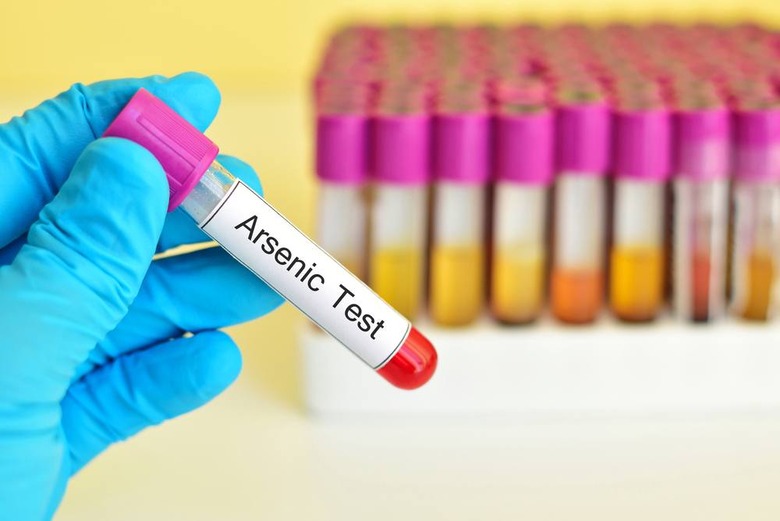This Common Food Staple Contains One Of The World's Most Toxic Elements
Trace amounts of arsenic are found in almost everything we consume from beer and Brussels sprouts to chicken and salmon, but in great enough quantities this known carcinogen can have lasting health complications. And although it is present throughout nature, an unusually high concentration of inorganic arsenic exists in one of the world's most common food staples — rice.
Rice is different from most other crops because it's traditionally grown under flood conditions, a technique which unlocks the arsenic harbored in the soil and makes it more easily absorbed by the rice. As a result, rice has 10 to 20 times more arsenic than other cereal crops. Like other toxic substances we periodically ingest, such as alcohol or tobacco smoke, the arsenic in rice is "dose dependent" — a full-grown adult eating rice three or four times a week is not at risk of adverse complications, but a baby or small child may be in danger.
Should parents be concerned?
Click here to see the 7 Foods That Will Kill You if You Don't Cook Them Right
Professor Andy Meharg of Queen's University Belfast, who has been researching arsenic for decades, says maybe. Professor Meharg told the BBC that low levels of arsenic impact immune development, growth development, and IQ development in children, and that as a result, governments should introduce stricter legislation around products specifically marketed to children. In 2016 the Food and Drug Administration proposed a limit for arsenic in infant rice cereal because, "relative to body weight, rice intake for infants ... is about three times greater than for adults." The agency acknowledged that it can be safe to serve rice to infants, but only in limited quantities. And it's not only cooked rice that people have to be wary about; puffed rice cereals, rice cakes, and rice flours also contain elevated arsenic levels.
Fortunately, there are cooking methods that will lower the arsenic level of rice. Professor Meharg notes that soaking the rice overnight before cooking it in a 5:1 water-to-rice ratio cuts arsenic levels by 80 percent. Not all varieties of rice are equally toxic either. According to an analysis of different types of rice by Consumer Reports, white basmati rice from California, India, and Pakistan, and sushi rice from the United States, on average, contained half the arsenic levels of most types of other rice. But interestingly enough, white rice from California was found to contain 38 percent less inorganic arsenic than white rice from other states. If you think you're safer with brown rice — think again. Whole grains with their outer bran intact contain, on average, 80 percent more inorganic arsenic than white rice of the same type.
In conclusion, it appears that eating a normal quantity of rice for full grown adults is perfectly fine, but new mothers should be cautious when feeding their infants rice.
